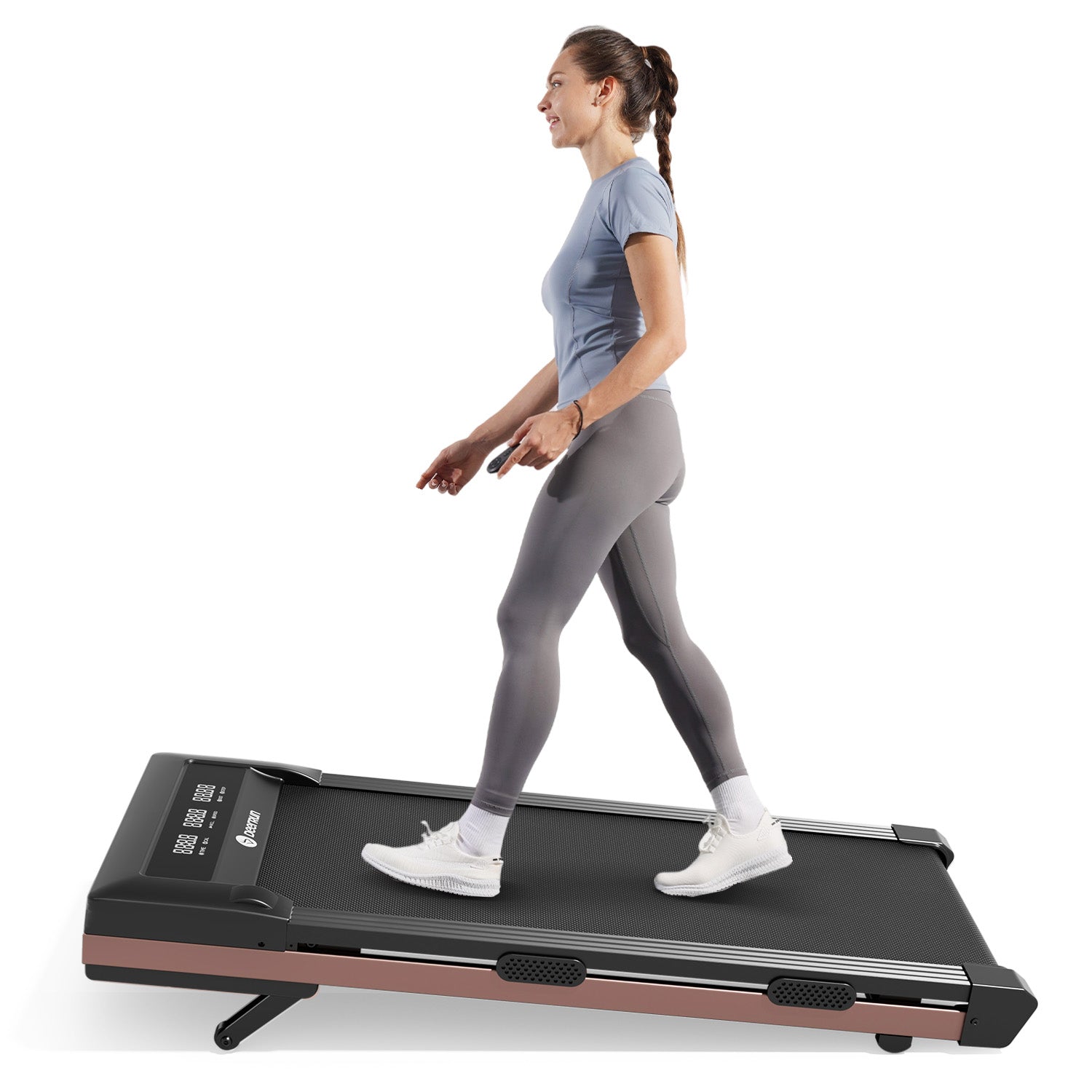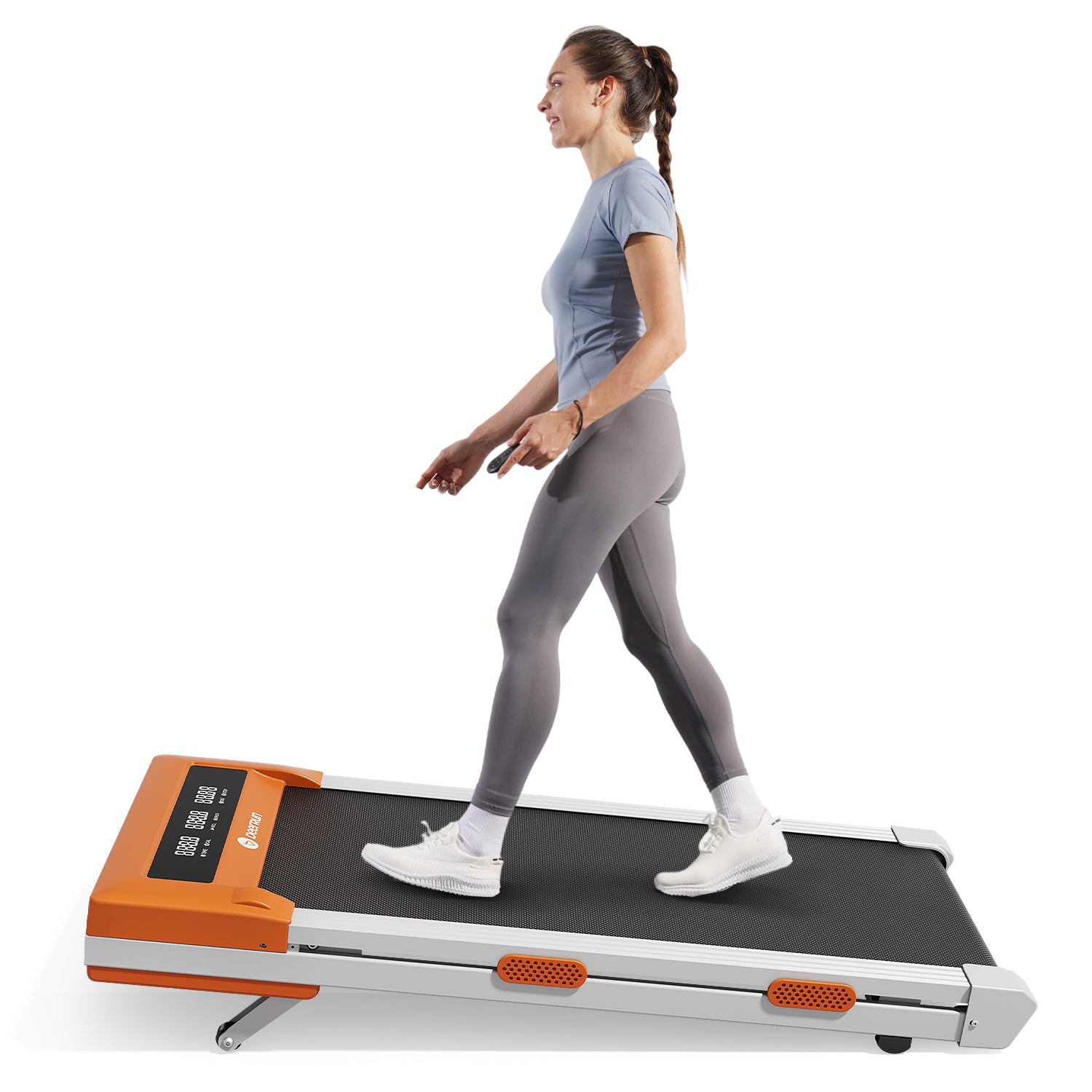The treadmill, a ubiquitous piece of exercise equipment found in gyms and homes worldwide, has long been a staple of cardiovascular workouts and overall fitness routines.
Treadmill workouts engage many muscles in the body and are important to acknowledge due to their popularity. Understanding which muscles are worked during treadmill exercises is not only fascinating but also critical for optimizing your fitness routine.
In this comprehensive guide, we will delve into the intricacies of the treadmill and unveil the muscles it targets. Whether you're experienced or new to running, we want to give you the information and tips to maximize your treadmill workouts.
Muscles Worked During Treadmill Running
Primary Muscles Engaged:
When you step onto a treadmill and start running, your body engages a variety of muscle groups, creating a holistic workout experience. Treadmill running primarily targets the lower body muscles, including the quadriceps, hamstrings, and glutes. These muscles are responsible for powering your strides and propelling you forward. However, the benefits of treadmill running extend beyond the lower body, as it also engages the core, upper body, and cardiovascular system.
Benefits of Treadmill Workouts for Overall Fitness:
Treadmill workouts offer numerous advantages for your overall fitness and well-being. Running on a treadmill is an excellent way to improve cardiovascular health, as it elevates your heart rate, enhances endurance, and increases oxygen consumption. Additionally, treadmill running can help with weight management, stress reduction, and mood enhancement. Understanding the multifaceted benefits of treadmill workouts underscores the importance of incorporating them into your fitness routine.
Individual Muscle Groups and Their Contributions:
- Quadriceps:
The quadriceps, the muscles on the front of your thighs, play a central role in extending your knees during each stride. They are vital for generating the power needed to push off and propel yourself forward on the treadmill.
- Hamstrings:
Situated on the back of your thighs, the hamstrings work in tandem with the quadriceps to flex the knee joint. They play a crucial role in controlling the forward motion and deceleration of your legs.
- Glutes:
Your gluteal muscles, comprising the gluteus maximus, medius, and minimus, stabilize your pelvis and provide propulsion when running. Strong glutes are essential for maintaining proper running form and preventing injuries.
- Core Muscles:
The core muscles, including the abdominals and lower back, are engaged to stabilize your torso while running. A strong core is essential for maintaining balance and preventing excessive swaying or twisting during your workout.
- Upper Body:
Although not as prominent as the lower body, the upper body also plays a role in treadmill running. Your arm and shoulder muscles are engaged as you swing your arms while running, helping to maintain balance and rhythm.
To get the most out of treadmill running, understand which muscles it works and target specific areas during your workouts.

Cardiovascular Benefits
How Treadmill Workouts Improve Cardiovascular Health:
Treadmill workouts are renowned for their profound impact on cardiovascular health. This is achieved through aerobic exercise, which involves the continuous and rhythmic movement of large muscle groups, like those engaged during treadmill running. The cardiovascular system, comprising the heart and blood vessels, benefits significantly from treadmill exercises. As you engage in brisk walking, jogging, or running on a treadmill, the following mechanisms contribute to improved cardiovascular health:
Increased Heart Rate and Oxygen Consumption:
- Increased Heart Rate:
Treadmill workouts elevate your heart rate as your body demands more oxygen and energy to sustain the physical effort. This increased heart rate strengthens the heart muscle, enhancing its pumping efficiency. Over time, this can reduce the risk of heart disease and improve overall cardiovascular function.
- Enhanced Oxygen Consumption:
Treadmill running leads to a heightened demand for oxygen by the working muscles. This stimulates the respiratory system, prompting you to breathe more deeply and rapidly. Improved oxygen consumption capacity is a hallmark of enhanced cardiovascular fitness, as it allows your body to efficiently deliver oxygen to muscles, optimizing their performance.
Connection Between Cardio Fitness and Muscle Engagement:
The link between cardiovascular fitness and muscle engagement is intrinsic to treadmill workouts. When you run on a treadmill, your heart beats faster and you breathe in more oxygen. This makes the muscles in your legs, stomach, and arms all work together to give you the energy you need. This collective effort contributes to improved muscle endurance and overall muscular efficiency.
Notably, strong cardiovascular fitness ensures that your muscles receive a steady supply of oxygen and nutrients during exercise. It helps delay the onset of muscle fatigue, allowing you to sustain physical activity for more extended periods. The cardiovascular system helps remove waste from muscles, reducing the chance of cramps and soreness after exercise.
In essence, the interplay between cardiovascular health and muscle engagement during treadmill workouts is a mutually beneficial relationship. Improved cardiovascular fitness supports more effective muscle function, while engaged muscles contribute to enhanced cardiovascular performance. Running on a treadmill is good for your heart and muscles, and it has overall benefits for your fitness routine.

Treadmill Workouts for Targeting Specific Muscles
Techniques and Adjustments for Focusing on Specific Muscle Groups:
Treadmill workouts can be tailored to target specific muscle groups by making various adjustments and employing specific techniques. Here's how you can focus on different muscle groups:
- Incline Settings:
Increasing the treadmill's incline emphasizes the engagement of the glutes and hamstrings. This is especially effective for toning and strengthening these muscles.
- Speed Variations:
Altering your running speed can impact the muscles you engage. Sprinting engages the quadriceps more while jogging at a moderate pace helps engage the calves and shins.
- Walking Lunges:
Incorporating walking lunges on the treadmill is a fantastic way to target the quadriceps and glutes. Hold onto the side rails for balance and take controlled lunge steps.
- Sideways Walking:
Walking sideways or doing lateral shuffles can engage the inner and outer thigh muscles, providing a unique muscle-toning workout.
Incorporating Incline, Speed, and Interval Training:
- Incline Training:
Increasing the treadmill's incline effectively targets the glutes and hamstrings while adding an extra challenge to your workout. For instance, a steep incline can mimic uphill running and further engage the lower body muscles.
- Speed Variation:
Altering your running speed can provide a range of benefits. Sprint intervals enhance cardiovascular fitness while engaging the quadriceps, while slow and controlled runs activate the core and promote endurance.
- Interval Training:
High-Intensity Interval Training (HIIT) on a treadmill involves short bursts of intense effort followed by rest or recovery periods. This form of training can effectively target a variety of muscle groups, improve cardiovascular health, and burn calories efficiently.

Tailoring Workouts to Individual Fitness Goals:
The key to targeting specific muscle groups with treadmill workouts is personalization. To tailor your treadmill workouts to your specific fitness goals, consider the following:
- Identify Your Goals:
Determine whether you aim to build muscle, improve endurance, burn fat, or achieve a combination of these objectives.
- Consult with a Trainer:
Seeking advice from a fitness professional can help you create a customized workout plan that aligns with your goals.
- Varied Workouts:
To target different muscle groups and prevent plateaus, mix up your treadmill routines. Combine incline workouts, sprint intervals, and endurance runs based on your goals.
- Progressive Overload:
Gradually increase the intensity and duration of your treadmill workouts to continue challenging your muscles and making progress toward your goals.
The treadmill is a versatile tool for toning your lower body, building core strength, and improving overall fitness. Customize workouts to target specific muscle groups for your fitness goals.
Conclusion
In the quest for a healthier and fitter lifestyle, understanding the muscles engaged during treadmill workouts is paramount. The treadmill is a versatile tool for exercising that engages many muscles in your body, not just a conveyor belt.
Treadmill running is a whole-body workout that targets the lower body, core, and upper body muscles. The benefits extend far beyond muscle engagement, encompassing cardiovascular health, endurance, and overall well-being.
Treadmill workouts can be tailored to suit various fitness goals. The treadmill can help you shape your lower body, strengthen your core, and improve your cardiovascular fitness during your fitness journey. It allows you to customize your workouts, adjusting speed, incline, and intensity to meet your specific objectives.
The connection between cardiovascular fitness and muscle engagement is a symbiotic one. As your heart rate rises and oxygen consumption increases, your muscles work diligently to meet the heightened energy demand. This synergy results in enhanced muscle endurance and overall muscular efficiency.
In essence, the treadmill is a remarkable tool for achieving a balanced, full-body workout. By harnessing its potential, you can improve your overall health, tone your physique, and achieve the fitness goals that matter most to you.































Leave a comment
All comments are moderated before being published.
This site is protected by hCaptcha and the hCaptcha Privacy Policy and Terms of Service apply.